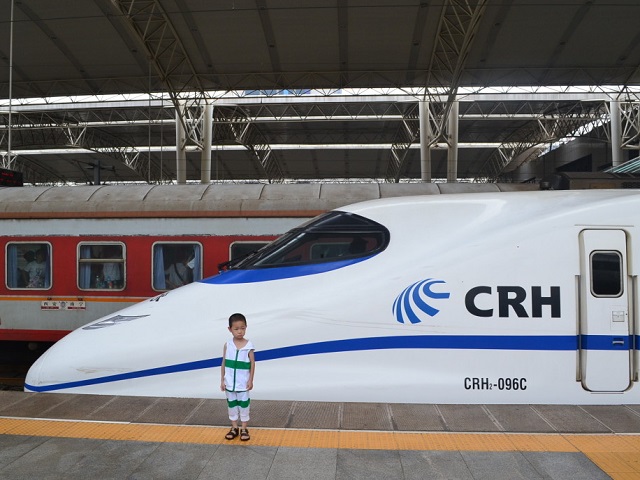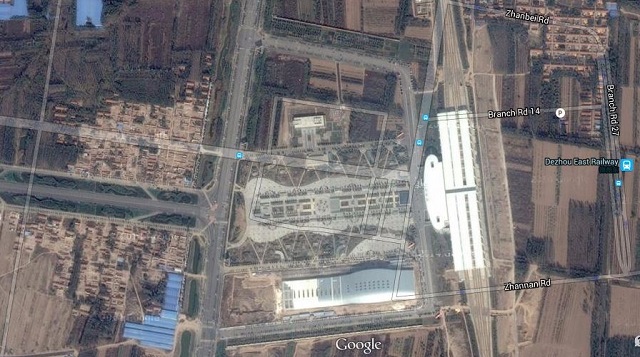How China Can Leverage High-Speed Rail for Compact Urban Development


High speed rail connects Zhengzhou with other Chinese cities and has potential to spur compact urban development across the country. Photo by Andrew Stokols.
Many large Chinese cities have developed around transport corridors. Hangzhou and Suzhou, for example, grew wealthy from their position on the Grand Canal, which connected northern and southern China. Today, the country’s high-speed rail (HSR) system is proving to be an equally powerful catalyst for urban development.
China’s HSR system presents an opportunity for transit-oriented development (TOD) around new stations. However, due to a variety of factors, development around stations has often failed to occur in a controlled or compact manner. A more coordinated strategy for TOD around HSR stations could help Chinese cities develop in more compact and sustainable ways.
High-Speed Rail Expands Rapidly Across China
Since 2008, China has built the world’s largest high-speed rail system. Just a decade ago, China had virtually no high-speed rail lines. Today, it has over 12,000 km of passenger-dedicated high-speed rail lines connecting most major Chinese cities. By 2020, the network will connect all provincial capitals and cities with a population of over 500,000—around 90 percent of China’s population.
China’s rapid rollout of high-speed rail is the result of not only massive government investment, but also the low cost of building rail in China. Several factors contribute to these low costs of construction, including China’s low labor costs and the government’s ability to easily procure land. New HSR lines are often built as elevated viaducts across long distances. This method has several advantages: it provides the level surface that high-speed rail requires, and also reduces the amount of farmland that needs to be acquired between cities. The focus on saving costs and maximizing speed, however, has also meant that many new stations are built far outside the city center, where land-acquisition costs are lower.
New Towns Mushroom around HSR Stations
In attempt to capitalize on the high property values caused by transit development, many Chinese cities have proactively planned new districts next to HSR stations. Along the Beijing-Shanghai HSR line, for example, 16 out of 24 cities have planned new urban areas adjacent to HSR stations, as many local officials view HSR as an opportunity to spur local economic growth. Officials even compete with one another to convince national authorities to locate stations in their cities.
The outcome of such development remains unclear. Indeed, a few of these new districts—mostly those in large cities—are on their way to become bustling urban districts, such as the new developments around the East Station of Hangzhou, the provincial capital of Zhejiang province. Many others in smaller cities have languished, like the one in Dezhou, Shandong province (1hr and 20 min south of Beijing by high-speed train). There, a massive plaza dumps passengers into farms and villages far from the city center. Some of these vacant areas may experience development when housing demands catch up, but others will likely remain “ghost towns”.
A high-speed rail station in Dezhou, China was built far outside the city center, amid farmland. Photo from Google Maps.
High Speed Rail Produces Mixed Results for Transit-Oriented Development
Multiple factors influence whether development around high-speed railway stations is successful or not. While transit-oriented design is typically considered a strategy that cities can use to concentrate development around intra-urban transit nodes, like subway and bus stops, it can also be applied to development around inter-city nodes, like HSR stations. The following recommendations would help China leverage its HSR system to spur compact and sustainable urban development:
- Station location matters: How vibrant new districts are depends largely on how well they can attract businesses, workers, and developers. Yet, in many situations, the decision of where to build new stations is influenced by political factors. For example, large Chinese cities with greater bargaining powers are able to negotiate with the China Railway Company (CR) to place HSR stations closer to city centers, whereas smaller cities might have stations located further out, sometimes over 20 km away. Stations far from the city center with poor public transport connections will be less successful. Additionally, new development could contribute to sprawl and the reduction of productive agricultural land on the periphery of cities.
- Coordinating regional development: Coordinated planning among cities to avoid inter-city competition is important. Cities served by HSR often aspire to become regional growth hubs. But fierce competition for investments may actually hinder economic growth. Therefore, better coordination in national and regional planning is necessary to ensure that new towns develop compactly.
- New financing models: In the most successful cases of TOD, the rail company develops and owns the land surrounding stations. Hong Kong’s MTR, considered one of the more successful examples of this model, owns property developments surrounding Hong Kong’s metro stations, like malls, which allow it to fund its rail operations. Japan’s private railroads have also been successful with this model.
Developing and maintaining public transit systems requires sizable investment. Funding transit development through property development around stations offers a way for the central government to reduce its costly subsidies. Furthermore, coordinated development around stations will ultimately increase ridership.
A new “directive” issued by the State Council last year may herald changes on the horizon. Calling for better integration between rail stations and adjacent urban development, the document promotes the ownership and development of land by (CR). But this recommendation doesn’t come with any concrete legal changes.
More clarification and substantive reforms will be needed before China can truly capitalize on its high-speed rail to foster more sustainable urban development.
This article first appeared at The City Fix.
